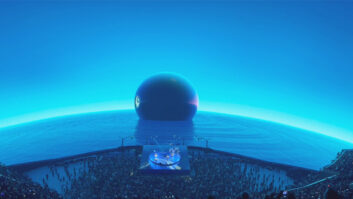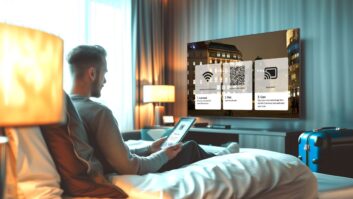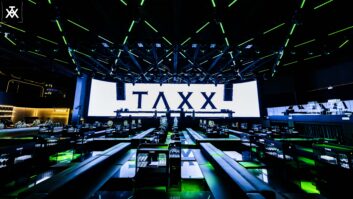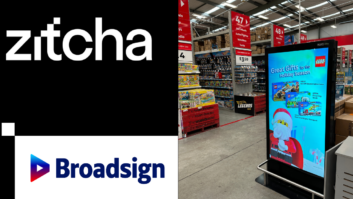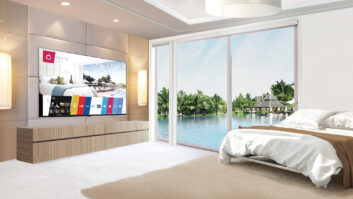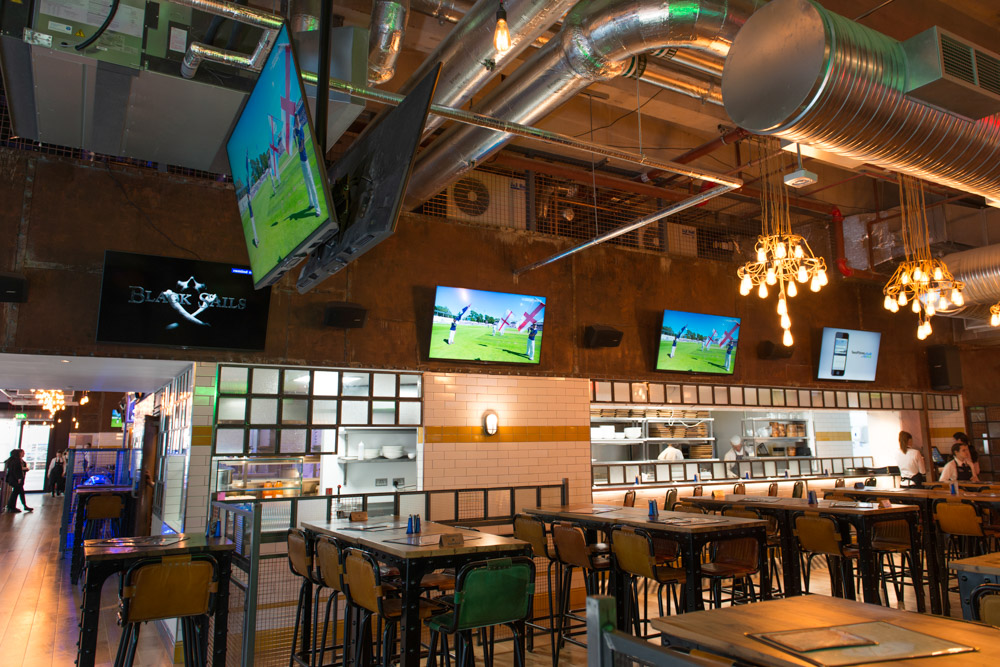
Having previously looked into how venues stay ahead of the competition in an increasingly competitive industry, here David Davies considers the benefits of implementing the Internet of Things and how far we are from 4K/UHD becoming an installation default across the sector.
Other developments in hospitality technology may be regarded as more subtle – but are important nonetheless. Lighting control to ‘provide a management of different atmospheres’ is one such example. Availability of easy-to-implement digital signage and IPTV is another, with James Keen, marketing manager at Tripleplay Services noting that Tripleplay’s provision of “a single platform to deliver all media services has proven hugely popular for hotel clients. It means they have just one management interface to use to update signage and IPTV screens around the venue, and to manage their in-room TV experience and the design of the screens, as well as the content on them. Our system also integrates with Property Management Systems (PMS), making it very simple for a venue to manage which customers get access to what content/services and charge them appropriately.”
One might also point to a continual improvement in the standard of video display. As Symetrix Eastern US regional sales manager Jim Latimer observes: “Commercial video displays, whether in the form of larger and large flat screens, screens for single or blended projectors, and videowalls all present options that ordinary people don’t have in their rooms, but can have major impact in a presentation scenario in a commercial space.”
And so with a sense of inevitability, it is at this point that we arrive at one of the industry buzzwords du jour: 4K/UHD. Although opinions vary on how quickly UHD will become an installation default for commercial building – some think a year or two, others much longer – any venues thinking about UHD implementation will need to consider not just the provision of compliant displays and related technology, but also sufficient connectivity and bandwidth.
“More and more hoteliers now require that their AV installation support UHD in order to avoid further changes in the future,” says Christophe Malsot, regional director, Crestron Southern Europe. “It is especially true in the meeting rooms. For example, the international group ACCOR installs Crestron solutions in its hotels all over the world with Crestron 4K matrix. These developments also impact [with regard to the] internet where the speed needs to be higher and higher. The Crestron AM-100 solution, which enables wireless presentation of HD content using laptops, tablets and smartphones, uses the WiFi network, so it’s important to have efficient networks.”
“As far as 4K is concerned, I think that the impact will be felt in the kind of infrastructure upgrades that will need to be made,” says Patrick Heyn, training & education department senior manager at QSC. “Many hospitality venues that still rely on coax cabling for in-room TV content delivery and even for their public spaces (like meeting rooms and ballrooms) will have to shift to higher bandwidth data cabling, whether or not they choose a video distribution technology that is Ethernet based or point-to-point, such as [uncompressed video connectivity standard] HDBaseT.”
Engineering ecosystems
There is a feeling, too, that ensuring hospitality venue devices can operate successfully as part of the Internet of Things will be another aspect of maintaining an appeal that cuts across groups. But some observers, like Heyn, imply that there is a long way to go yet.
“I think that manufacturers just need to keep the IoT functionality end-game at top of mind in how they design products going forward, and look to establish more ways to collaborate and interoperate to provide real value to our customers,” he says. “Unfortunately, many of them continue to push proprietary network technologies, or they do not fully utilise a Layer 3 network at all, which is fundamental for IoT. In addition, IoT means more than just having an RJ45 port on your box and providing a control protocol. It is an ecosystem of devices across vendors and the required software back-end infrastructure (Cloud or On-Premise) that needs to be fleshed out further to provide meaningful value to the consumers and for the IoT concept to really shape the future of our industry. This is true for hospitality but also for the larger AV space.”
Optimising these technologies will call for integrators with extremely fertile and up-to-date skillsets, and so it is likely to be the hospitality venues with the greatest resources – and, one might suggest, the most acute foresight – that are destined to retain the greatest competitive edge long-term.
Crestron control systems
Symetrix audio networking
Tripleplay digital signage services
QSC audio solutions
